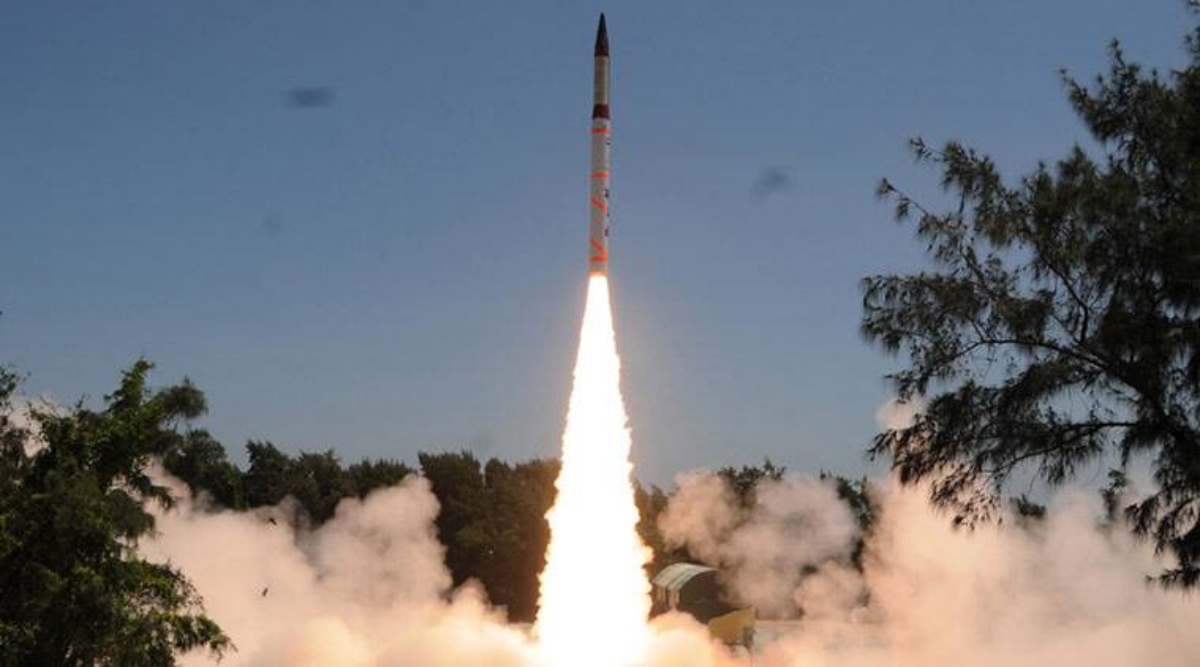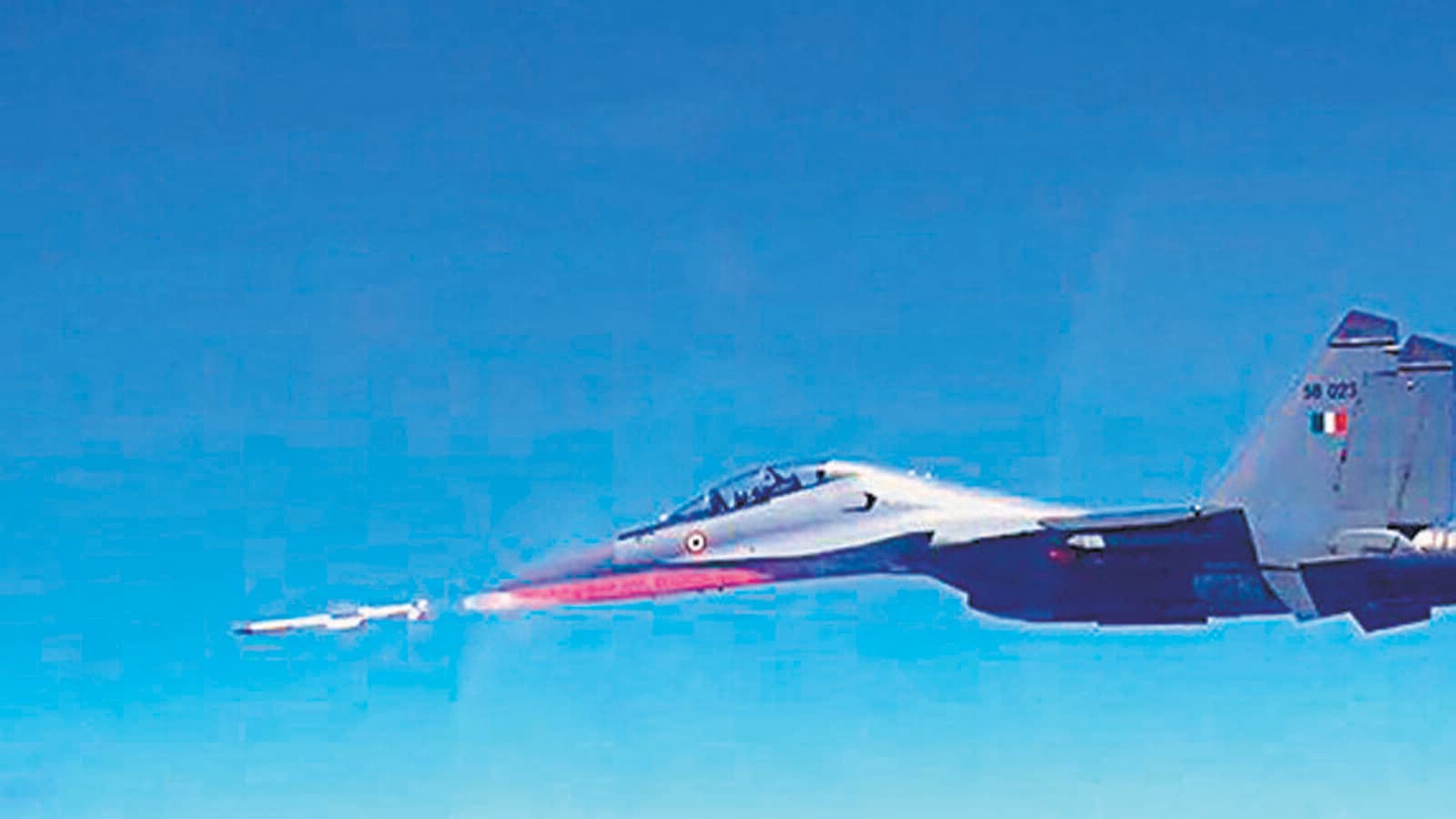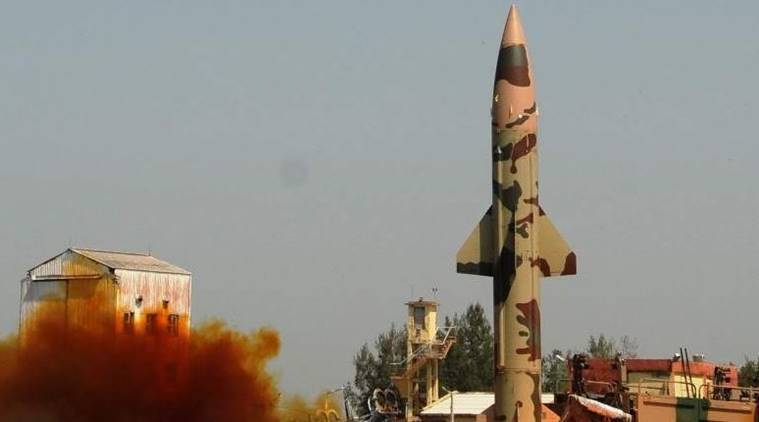You are using an out of date browser. It may not display this or other websites correctly.
You should upgrade or use an alternative browser.
You should upgrade or use an alternative browser.
Astra mark 2 will be the real deal. mark one just exceeds r77 capabilities i think.
Rajendra Chola
Well-known member
What is Indian army air support officer? More so maybe related to Helis. Even if it's there, what they have to do with Astra missiles which is an exclusive domain of the IAF.
What is Indian army air support officer? More so maybe related to Helis. Even if it's there, what they have to do with Astra missiles which is an exclusive domain of the IAF.
Could just be a fella in the know. Army air corps and AF probably have lot of joint officer interaction going on.
What is Indian army air support officer? More so maybe related to Helis. Even if it's there, what they have to do with Astra missiles which is an exclusive domain of the IAF.
Could just be a fella in the know. Army air corps and AF probably have lot of joint officer interaction going on.
It's sarcasm bro...after the news that Astra was overweight by 50kg. "Flameless, thrustless" propellent is the key.
Mihir Shah is a master of this art.

India tests nuclear-capable Agni-4 missile
The ministry stated that the “launch validated all operational parameters as also reliability of the system”, and “reaffirms India's policy of having a Credible Minimum Deterrence Capability”.
India conducted a “routine user training” launch test of its nuclear-capable Agni-4 missile on Monday, reaffirming the credible minimum deterrence capability. Agni and Prithvi are the country’s two main nuclear missiles.
“A successful training launch of an Intermediate Range Ballistic Missile, Agni-4, was carried out at approximately 1930 hours [7.30 pm] on June 6 from APJ Abdul Kalam Island, Odisha,” the Defence Ministry said in a statement. “The successful test was part of routine user training launches carried out under the aegis of the Strategic Forces Command.”
The ministry stated that the “launch validated all operational parameters as also reliability of the system”, and “reaffirms India’s policy of having a Credible Minimum Deterrence Capability”.
Agni-4 is an Intermediate Range Ballistic Missile with a range of around 4,000 km. Developed by Defence Research and Development Organisation (DRDO), it can carry a 1,000-kg payload and can go as high as 900 km.
The Strategic Forces Command has earlier conducted user trials in 2014, 2015, 2017 and 2018. The Strategic Forces Command is operationally responsible for all of India’s nuclear assets. India can launch nuclear missiles from land, air and from submarines, and is one of the few countries that has the nuclear triad.
Rajendra Chola
Well-known member

India tests nuclear-capable Agni-4 missile
The ministry stated that the “launch validated all operational parameters as also reliability of the system”, and “reaffirms India's policy of having a Credible Minimum Deterrence Capability”.indianexpress.com
India conducted a “routine user training” launch test of its nuclear-capable Agni-4 missile on Monday, reaffirming the credible minimum deterrence capability. Agni and Prithvi are the country’s two main nuclear missiles.
“A successful training launch of an Intermediate Range Ballistic Missile, Agni-4, was carried out at approximately 1930 hours [7.30 pm] on June 6 from APJ Abdul Kalam Island, Odisha,” the Defence Ministry said in a statement. “The successful test was part of routine user training launches carried out under the aegis of the Strategic Forces Command.”
The ministry stated that the “launch validated all operational parameters as also reliability of the system”, and “reaffirms India’s policy of having a Credible Minimum Deterrence Capability”.
Agni-4 is an Intermediate Range Ballistic Missile with a range of around 4,000 km. Developed by Defence Research and Development Organisation (DRDO), it can carry a 1,000-kg payload and can go as high as 900 km.
The Strategic Forces Command has earlier conducted user trials in 2014, 2015, 2017 and 2018. The Strategic Forces Command is operationally responsible for all of India’s nuclear assets. India can launch nuclear missiles from land, air and from submarines, and is one of the few countries that has the nuclear triad.
Pretty surprised India inducted Agni IV. I was under the impression that they skipped it and went to Agni V directly as Agni IV does not give any advantage over our adversaries. I mean Agni II and III already covers Pakistan. IV is an overkill and doesn't cover whole of China which the V does. So the SFC conducting routine training test means it has been operational for sometime.
Pretty surprised India inducted Agni IV. I was under the impression that they skipped it and went to Agni V directly as Agni IV does not give any advantage over our adversaries. I mean Agni II and III already covers Pakistan. IV is an overkill and doesn't cover whole of China which the V does. So the SFC conducting routine training test means it has been operational for sometime.
I suppose Agni IV is useful platform to add and validate certain things on (for the family going forward at large)....compared to using a more expensive, much larger Agni III or V which ought to follow relatively more rare user trial regimen given their respective deterrence potentials currently.
It is also very mobile (w.r.t larger agni missiles)....and might occupy role like what such "fast strike" IRBMs (like pershing II) did in latter cold war.
Range deterrence is not the only factor.
Rajendra Chola
Well-known member
I suppose Agni IV is useful platform to add and validate certain things on (for the family going forward at large)....compared to using a more expensive, much larger Agni III or V which ought to follow relatively more rare user trial regimen given their respective deterrence potentials currently.
It is also very mobile (w.r.t larger agni missiles)....and might occupy role like what such "fast strike" IRBMs (like pershing II) did in latter cold war.
Range deterrence is not the only factor.
It's possible. I think Agni V was only recently inducted after several user trials. So they wanted to have Agni IV in the meantime. Agni V has several new tech, carrying over several improvement from Agni Prime which I think have delayed it's induction. Anyway I am eagerly awaiting for K5 SLBM test whose range is supposed to be 6000 km.
fire starter
Well-known member
Agni iv was actually a TD for agni v.Pretty surprised India inducted Agni IV. I was under the impression that they skipped it and went to Agni V directly as Agni IV does not give any advantage over our adversaries. I mean Agni II and III already covers Pakistan. IV is an overkill and doesn't cover whole of China which the V does. So the SFC conducting routine training test means it has been operational for sometime.

India developing 300km range air-to-air missile
The Astra Mk-2 and Mk-3 missiles are likely to be tested next year and in 2024 respectively, and are among the Defence Research and Development Organisation’s (DRDO) key ongoing programmes, said one of the officials cited above.
The Astra Mk-2 and Mk-3 missiles are likely to be tested next year and in 2024 respectively, and are among the Defence Research and Development Organisation’s (DRDO) key ongoing programmes, said one of the officials cited above.

India has imposed a phased ban on the import of 310 different types of weapons and systems during the last two years to boost self-reliance in the defence manufacturing sector.(HT file photo. Representative image)
India is developing two advanced variants of the Astra beyond visual range air-to-air missiles, with one of them capable of striking targets at a range of 160km, when ready, and the other at almost 300km, senior government officials said on Friday on the condition of anonymity.
The Astra Mk-2 and Mk-3 missiles are likely to be tested next year and in 2024 respectively, and are among the Defence Research and Development Organisation’s (DRDO) key ongoing programmes, said one of the officials cited above.
The current Astra Mk-1 variant has a range of around 100km.
The defence ministry on May 31 signed a ₹2,971-crore contract with Bharat Dynamics Ltd (BDL) to equip the Indian Air Force and Indian Navy with Astra Mk-1 missiles and associated equipment, which was seen as a shot in the arm for “Atmanirbharta”, or self-reliance, in the defence manufacturing sector.
DRDO has transferred technology to BDL for the production of the Astra Mk-1 and associated systems.
“Future air combat will be about detecting and striking targets at the farthest possible range. It will be the outcome of increase in the detection ranges of radars and the advent of longer-range missiles. It is important for India to develop missiles like Astra Mk-2 and Mk-3 to meet IAF’s requirements,” said Air Marshal Anil Chopra (retd), director general, Centre for Airpower Studies.
China has developed the PL-15 beyond visual range air-to-air missile that can hit targets at around 200km, while the Meteor with a range of around 160 km is considered the best in its class in the western world, and the new Astra variants will put India in the big league, he added.
The Astra Mk-1 missile has been fully integrated with the Sukhoi-30 fighters and will now add to the capabilities of other combat planes including the Tejas light combat aircraft, the officials said. Also, the navy’s MiG-29K fighters, which operate from India’s sole aircraft carrier INS Vikramaditya, will be equipped with the Astra Mk-1 missile.
The ongoing Russia-Ukraine crisis has exposed India’s overwhelming dependence on imported weaponry, especially from Russia, and underlined the urgent need for speeding up the indigenisation drive to become self-reliant.
Long-range missiles allow fighter jets to shoot down hostile aircraft from a significant standoff range, staying out of the adversary’s air defence envelope.
India has imposed a phased ban on the import of 310 different types of weapons and systems during the last two years to boost self-reliance in the defence manufacturing sector.
These include lightweight tanks, naval utility helicopters, artillery guns, missiles, destroyers, ship-borne cruise missiles, light combat aircraft, light transport aircraft, long-range land-attack cruise missiles, basic trainer aircraft, multi-barrel rocket launchers, assault rifles, sniper rifles, specified types of helicopters, next-generation corvettes and airborne early warning and control (AEW&C) systems.
The 310 weapons and systems that have to be developed in the country were notified in three separate positive indigenisation lists published by the defence ministry in August 2020, May 2021 and April 2020.
Since the notification of the first and second lists, contracts for 31 projects worth ₹53,839 crore (7 bln USD) have been signed by the defence services as of April 2022, according to defence ministry data.
Also, acceptance of necessity (AoN) for 83 projects worth ₹1,77,258 crore (23.5 bln USD) was accorded by April 2022, and cases worth ₹2,93,741 crore (39 bln USD) will be taken up in the next five to seven years.
The domestic industry is likely to receive orders worth ₹2,10,000 crore (28 bln USD) in the next five years as a result of the third list, according to the defence ministry’s projections.
fire starter
Well-known member

India test fires second nuclear-capable missile in 10 days
Prithvi-II is an indigenously developed surface-to-surface missile, which has a range of around 250 km and can carry a one tonne payload.
Nearly 10 days after India conducted a routine test of its nuclear-capable Agni missile, it carried out another test of its other nuclear-capable missile, Prithvi.
The government said in a statement that a “successful training launch of a Short-Range Ballistic Missile, Prithvi-II” was carried out Wednesday at 7:30pm from the Integrated Test Range, Chandipur, Odisha.
“The missile is a proven system and is capable of striking targets with a very high degree of precision,” the statement said, adding that the “user training launch successfully validated all operational and technical parameters of the missile.”
Prithvi-II is an indigenously developed surface-to-surface missile, which has a range of around 250 km and can carry a one tonne payload.
India had tested its Intermediate Range Ballistic Missile Agni-IV on June 6, which can travel as far as 4,000 km.
After the “routine user training” launch test of the nuclear-capable Agni-IV, the government had stated that the successful test “reaffirms India’s policy of having a Credible Minimum Deterrence Capability.”
The tests come at a time when globally there seems to be a revamp of nuclear capabilities. The Stockholm International Peace Research Institute (SIPRI) had said in a report on June 13 that the post-cold war decline of nuclear arsenal around the world was ending.
It said that the nine nuclear-armed states — the United States, Russia, the United Kingdom, France, China, India, Pakistan, Israel and North Korea – “continue to modernize their nuclear arsenals and although the total number of nuclear weapons declined slightly between January 2021 and January 2022, the number will probably increase in the next decade.”
China, it said, is in the middle of “a substantial expansion of its nuclear weapon arsenal, which satellite images indicate includes the construction of over 300 new missile silos” and added that several additional “warheads are thought to have been assigned to operational forces in 2021 following the delivery of new mobile launchers and a submarine.”
For India and Pakistan, the SIPRI report noted that both countries “appear to be expanding their nuclear arsenals, and both countries introduced and continued to develop new types of nuclear delivery system in 2021.”
Russia and the US still possess over 90 per cent of all nuclear weapons globally, it said, but the “other seven nuclear-armed states are either developing or deploying new weapon systems, or have announced their intention to do so.”
While India has around 160 total nuclear warheads, Pakistan has 165, and China has around 350. Russia’s total nuclear warheads are 5,977 and the United States has 5,428, as per SIPRI data.
fire starter
Well-known member
fire starter
Well-known member
fire starter
Well-known member
Rajendra Chola
Well-known member
Who is going to buy it?


